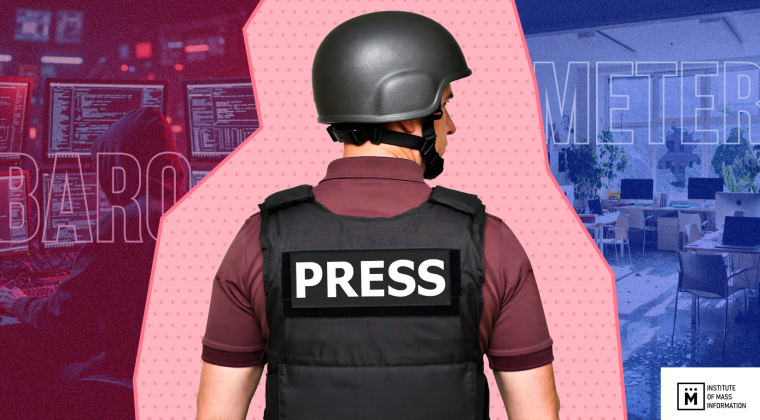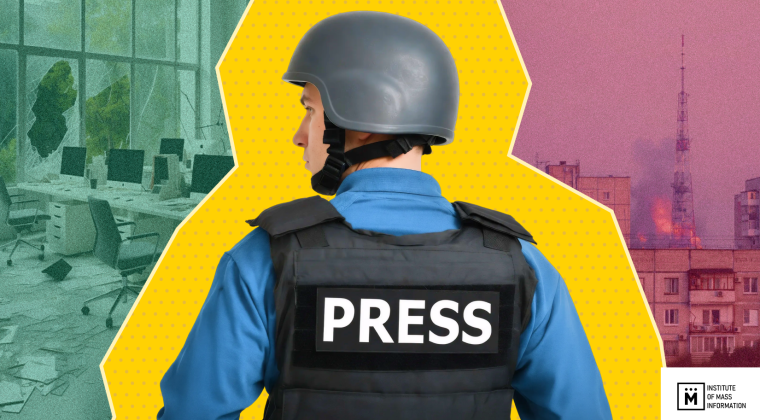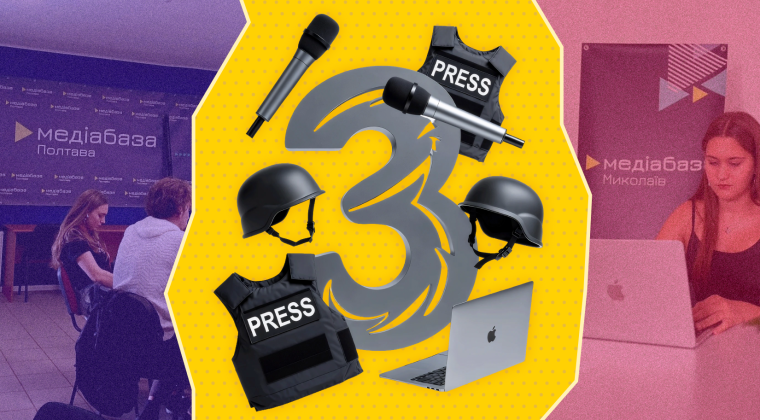On February 24, 2022, Telegram saw the beginning of a large-scale russian disinformation operation called “War on Fakes.” The channel’s content targets russians and is dedicated to denying russian war crimes and discrediting the Ukrainian media space in the “fake–truth” format. The channel’s authors claim that they do not engage in politics, but want to provide objective information about what is happening in Ukraine.
The anonymous Telegram channel “War on Fakes” was created on the first day of the full-scale russian invasion. In its manifesto, the channel’s admins declare that Western countries have forced russia into an information war which is causing suffering to ordinary people, and their task is to fill the media space with objective information that should reduce anxiety and panic in russian society.
In the first two weeks alone, “War on Fakes” managed to garner 700,000 subscribers, publishing an average of 30 posts per day. The content is texts that are based off Ukrainian and international news. The channel’s mission, according to the authors, is to “dissect fakes and provide references for their refutation.” Some of the posts debunked on the channel may actually be fakes, but the real purpose of the channel is to deny the real crimes of the russian army.
 Screenshots from the Telegram channel «War on Fakes. Analytics» which frame the Bucha massacre as a fake
Screenshots from the Telegram channel «War on Fakes. Analytics» which frame the Bucha massacre as a fakeGeneral information
In its aesthetics, the Telegram channel “War on Fakes” imitates the open source intelligence (OSINT) format which is popular these days. Each posts consists of an alleged fake, a short “debunking,” and a lengthy comment. Screenshots or fragments of news reports or videos taken by eyewitnesses are used as illustrations. But the “evidence base” of the “refutations” is a set of value judgments, emotional vocabulary, subjective assumptions, lies, and manipulations.
 Screenshot from the https://waronfakes.com
Screenshot from the https://waronfakes.comIn addition to the main “news debunkings” tag, there are two more: #numberoftheday (#цифрадня) and #quoteoftheday (#цитатадня), where quotes from russian figures and international politicians are being posted out of context.
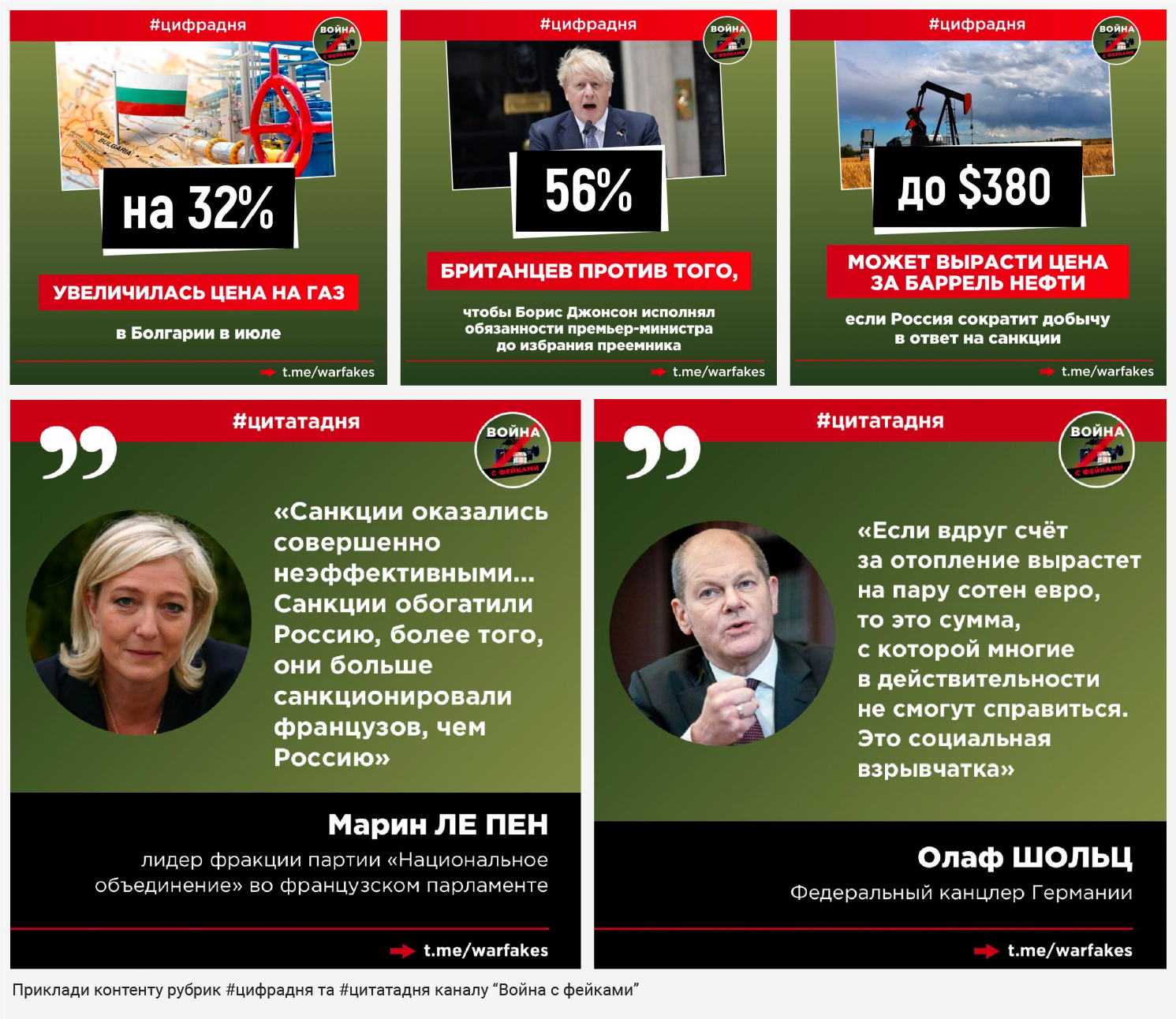
#numberoftheday
32% is the gas price hike in Bulgaria in July
#numberoftheday
56% of British citizens against Boris Johnson acting as Prime Minister until his successor is elected
#numberoftheday
up to $380 per barrel is how much the oil price may rise if Russia reduces the production in response to the sanctions
#quoteoftheday
“The sanctions proved to be utterly ineffective… The sanctions have made Russia richer; moreover, they sanctioned the French people more than Russia”
Marine Le Pen, Leader of the National Rally party in the French Parliament
#quoteoftheday
“If the heating bill rises by a few hundred euros, that will be a sum that a lot of people cannot really afford. It is a social explosive”
Olaf Scholz, Federal Chancellor of Germany
The structure of the “War on Fakes” network
The “War on Fakes” channel is the core of a network (700,000+ subscribers). Original content is being posted here, then spread by clones and booster channels. Clones are channels that are very similar to the core, but have much fewer subscribers (from 200 to 20,000) and mostly repost the core channel, so original content is almost absent. Booster channels are similar to clones, but are more different from the core or repost several Telegram channels at the same time.

The direction of the arrows on the infographic shows the direction in which content moves: incoming or outgoing. I.e., if the arrow points from warfake to, say, warfake_samara, it means that the Samara channel reposted the content. The sizes of the arrows’ triangles represent the numbers of reposts: the larger the triangle, the more content output or input there is between channels. As we can see on the infographic, the content is being spread from the warfakes channel by clones that communicate with one another. Those are assigned to such cities and regions as Rostov, Belgorod, Kuban, Crimea, Voronezh, Samara, the Republic of Kalmykia, Kirov, Khabarovsk Region, Transbaikalia, Bashkortostan, the Republic of Sakha (Yakutia), as well as Belarus and Ukraine.
One of the network’s important channels, which is also often cited by the core one, is “War on Fakes. Analytics” (82,000 subscribers). Its authors promise “not only to debunk lies and disinformation, but also to analyze, try to predict the development of events and give the floor to experts on one topic or other.” This channel was created on February 26, and the first post about “What hides in Ukrainian biolaboratories” was published on March 21. It is this channel that will later post so-called analytics about the Mariupol bombings and the Bucha genocide, denying the involvement of russian troops in these and other crimes against the civilian population.
All channels were created within the first week of russia’s large-scale invasion of Ukraine. The audience growth looks organic for the main channel, probably due to the described network of clone channels that regularly repost content, as well as russian officials, propagandists, and mass media promoting the channel.

We can see by the channels’ registration dates that two large groups of channels have been created on February 26 and March 1. The only channel created before russia’s large-scale offensive was “War on Fakes. Belarus.” It was created on January 27 with a single transphobic post about a Belarusian activist, and has been posting regularly since February 26.

The pattern is similar in case of the websites. The russian-language website was created on February 24, and the multilingual website with translations in six languages (English, Chinese, German, French, Spanish, Arabic) https://waronfakes.com, which holds approximately 10% of the channel’s content, was created on March 1. The russian-language website https://войнасфейкамы.рф/mo—rf/ fully rebroadcasts the content of the main Telegram channel with a several hours delay, and has such tags as: all fakes, analytics, UAF, “Civilians,” “LPR,” “DPR,” “MoDRF.” Both domains are registered in Moscow through the reg.ru portal.

The narratives
In the first three months (February-March, April, May), the channel’s top narratives were denying the russian army’s war crimes and accusing Ukrainians of creating fakes. For example, in March, when the russians would bomb the Mariupol maternity hospital with staff and patients inside or a drama theater in which hundreds of civilians were hiding, the channel would post a material saying that it had been “staged.” Here is the typical Warfakes rhetoric:
The story raises many questions: it is logical to assume that if there really were women in labor there, the rescuers and eyewitnesses who arrived on the site first would immediately take photos of the emergency on their phones, not wait for a well-known reportage photographer (https://www .instagram.com/evgenymaloletka/?utm_medium=copy_link). However, the first to prepare and publish the photos happened to be the well-known Ukrainian propagandist Yevhen Maloletka (https://www.evgenymaloletka.com/about)…
The text boils down to the Azov Regiment allegedly using the premises of the hospital as their base and being present at the crime scene. They wrote the same about the drama theater, and after the world saw the footage from Bucha, the channel’s administrators spent a whole month on denying the russian army’s involvement in these terrible murders.
Let’s give an example of the second narrative, “accusing Ukrainians of creating fakes.” After Angelina Jolie’s visit, someone really came up with fake news about actor Ian McKellen, who played Gandalf in “The Lord of the Rings,” also coming to Lviv.
Fake: Famous actor Ian McKellen, who played Gandalf in the “Lord of the Rings” saga, visited Lviv and took a picture with a fan. Such messages were distributed by Ukraine’s largest tg-channels and several mass media.
Truth: In fact, the 82-year-old actor had not visited Ukraine and did not even plan to do so, as he wrote on his official Twitter account: “Despite reports and supposed photographs circulating online, I have not visited Lviv or elsewhere in Ukraine.”
This fake was really being spread around by Ukrainian websites and Telegram channels. But earlier, “War on Fakes. Analytics” wrote that Angelina Jolie’s visit to Lviv was staged, although they did not deny her stay in Lviv. Analyzing the texts published by the network of these channels, finding logic may prove difficult, because the topic stated in the headline often does not correspond to what is written in the article itself. That is, instead of proving that Jolie was not in Lviv, they were pouring out accusations like “What, is the coffee in Donetsk not as good?” “It was worse in Syria, and they were bombed by the US.” Here is the final fragment of this text:
Angelina Jolie is far from the only Hollywood actor who expressed support for Kyiv. During the first days of the special operation, Ukrainian President Volodymyr Zelensky met with actor Sean Penn. After that, it became known that a whole plane of Hollywood producers, screenwriters, and special effects specialists had landed in Poland. Their main goal is to generate false information aimed at Western viewers and to stage bloody scenes. After Jolie’s visit yesterday’, we can expect new fakes to appear in the Western media.
Three months later, when these narratives exhausted themselves, the discreditation of the UAF rose to the top, together with a narrative framing the russian military as supposedly highly moral people who treat Ukrainians well, rescuing and sheltering them. “russian servicemen saved the life of a wounded UAF officer who had been abandoned by his own troops hastily leaving their positions.” The rescued officer’s response included: “Thank you very much to the doctors. To be honest, I was sure that they would torture me, beat me. Surprisingly good treatment from the medical staff.”
The second most popular narrative in June was about how the life in the occupied territories is getting better and the denial of any consequences of mass murder and infrastructural destruction. Such as:
Fake: There is an outbreak of cholera in Mariupol, reported by the mass media with reference to the statements of the former Mariupol mayor Vadym Boychenko and British intelligence.
Truth: This information has been debunked by the citizens themselves, representatives of the authorities, and international organizations. For example, Mariupol resident Aleksey Paramonov has talked about the hygiene situation in the city. The water supply has been restored, residents are experiencing no drinking or technical water shortage.
Who creates the content for “War on Fakes?”
The network looks like a large-scale centralized information war operation, targeting primarily the russian citizens and promoting pro-russian sentiments among a russia-tolerant audience. Given the synchronization between the channels, the amount of content and the scale of the network, we can assume that this is done by people from two units of the russian Armed Forces.
A formation called “Information Operation Forces” has been created as part of the Ministry of Defense of the russian federation in 2014. You can find a lot of news about the foundation of this unit online. The purpose of this force is countering virtual threats, spying, conducting cyber attacks, and protecting the military command and communication systems. It is not clear whether they are engaged in propaganda, but it is known that this unit is subordinate to the Ministry of Defense of russia, whose Telegram channel named “Ministry of Defense of the Russian Federation” reposts the “War on Fakes” channel every day.
Also, there are “Psychological operations subdivisions (PsOS)” within the armed forces of the russian federation; those are subordinate to the central military intelligence authority better known as the GRU. They are engaged in various propaganda, disablig the TV and radio signal in the occupied territories, spreading disinformation, holding individual conversations with the population and prisoners in the occupied territories.
Ties to the russian government
In March, Maria Zakharova, spokeswoman for the Ministry of Foreign Affairs of the russian federation, shared two posts from this channel. One post was promoting the network’s English-language channel, and the second one she shared was about the Mariupol maternity hospital bombing which we mentioned at the beginning of the article. According to them, the hospital was being used as a base by Azov fighters and there was no civilian population there, and all the evidence to the contrary is “staged by Ukrainian propagandists.”
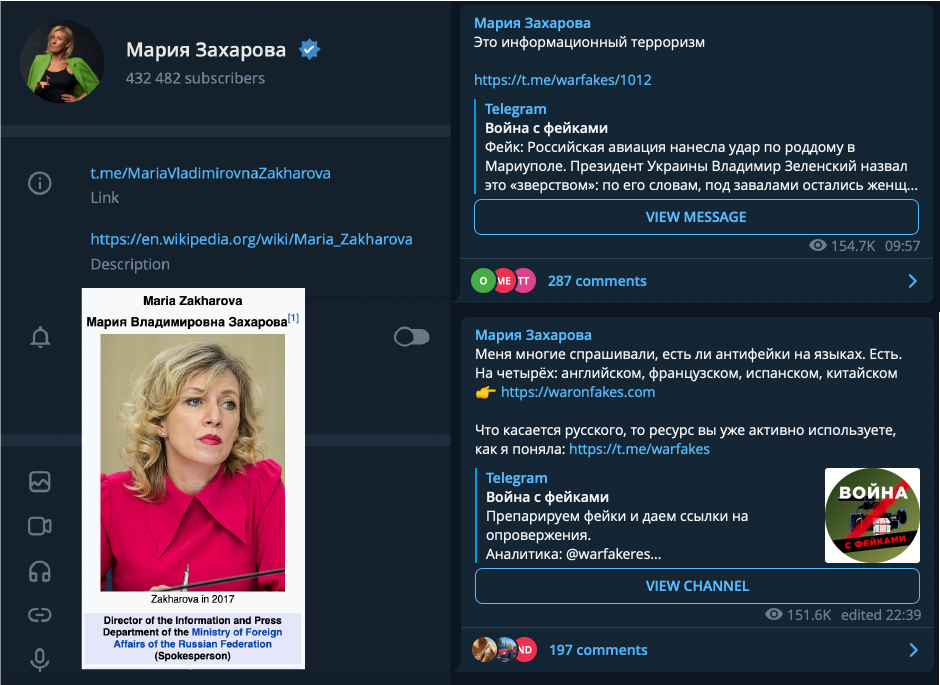
Maria Zakharova: This is information terrorism.
Maria Zakharova: A lot of people have asked me if there are any antifakes in [other] languages. There are. In four: English, French, Spanish, Chinese.
The content of the channel is being shared daily by russian propaganda Telegram channels and the russian Ministry of Defense.


Beyond Telegram
Using the crowdtange tool, we also discovered that in the first month of the large-scale offensive, the warfake channel was being promoted by 10 russian embassies and 23 institutions called Russian House, which are subordinate to the russian Foreign Ministry. There are 44 such “houses” in total, and all of them are part of the “Rossotrudnichestvo” program of the Ministry of Foreign Affairs of russia and promote the russian language, science, and culture abroad. Each of these Facebook pages had an average of 9,800 followers (ranging from 49,471 to 594), and each post had an engagement ratio of 1,482 to 5.
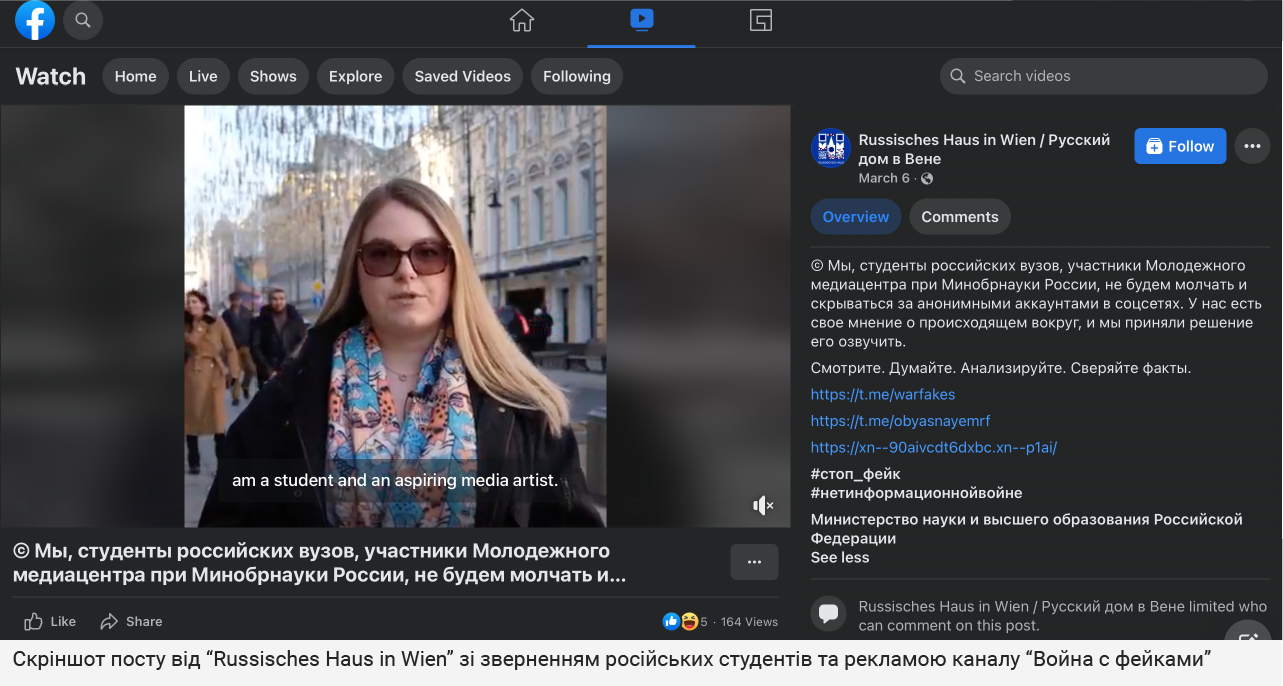 Screenshot of a «Russisches Haus in Wien» post which contains an address from russian students and promotes the «War on Fakes» channel
Screenshot of a «Russisches Haus in Wien» post which contains an address from russian students and promotes the «War on Fakes» channel
“We, the students of russian universities, participants of the Youth Media Center at the Ministry of Education and Science of russia, will not be silent or hide behind anonymous social media accounts. We have our own opinion about what is going on around us, and we have decided to voice it. Look. Think. Analyze. Check the facts.”
So, what is the goal of the disinformation operation?
“War on Fakes” borrows the fact-checking rhetoric and exploits it to undermine the general epistemological foundations, calling facts fakes and the program’s fakes facts. Schizofascism is a term that describes this phenomenon well, because, as in the case of schizophrenia, the symptoms of russian propaganda are paranoia, a distorted understanding of reality, and failure of logical thinking. All this takes shape in conspiracy theories, conflicting versions of events, lies, and concept substitution.
The “War on Fakes” network not only misinforms its readers, but also imposes on them a distorted picture of the world in which everyone in russia lives well, sanctions are not terrible, russian soldiers are good, and the locals in the temporarily occupied territories cheer on the occupiers.
We believe that one should not spread such content or subscribe to such channels, even if one knows that what they post is untrue. The subscriber count increases the outreach and platform’s tolerance of the channel in general.
It is worth remembering that an important component of russian schizofascism is military information and psychological operations (IPSO). The special operations described in this article are a psychological weapon that has a destructive effect on the human psyche. Therefore, we advise against even browsing such channels, unless you are doing it for research purposes.
This article was based on the findings of the project executed during the Digital Methods. Winter School in 2022 in Amsterdam. Participants: Karyna Lazaruk and Marc Tuters (project leaders), Borka Balogh, Marta Ceccarelli, Emillie de Keulenaar, Kiara Khorram, Devin Mitter, Son Nguyen, Stijn Peeters, Emilie Schwantzer, Cemal Tahir, Alexander Teggin, Yana Mashkova and Anton Mishchuk.
The sample for the narrative analysis included 425 content items of the “War on Fakes” channel.
Survey period: February 24 – June 20.
Karyna Lazaruk, for IMI

